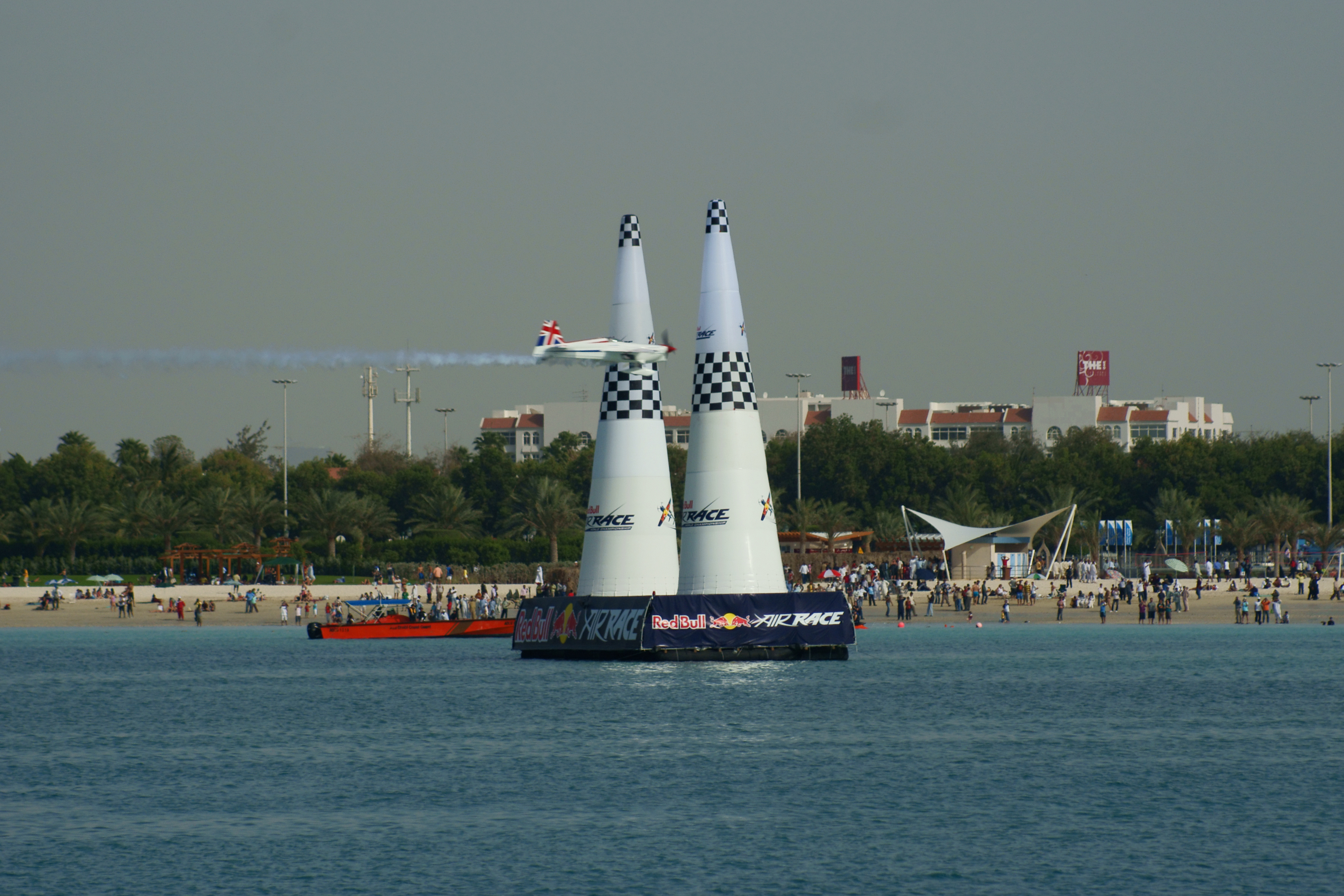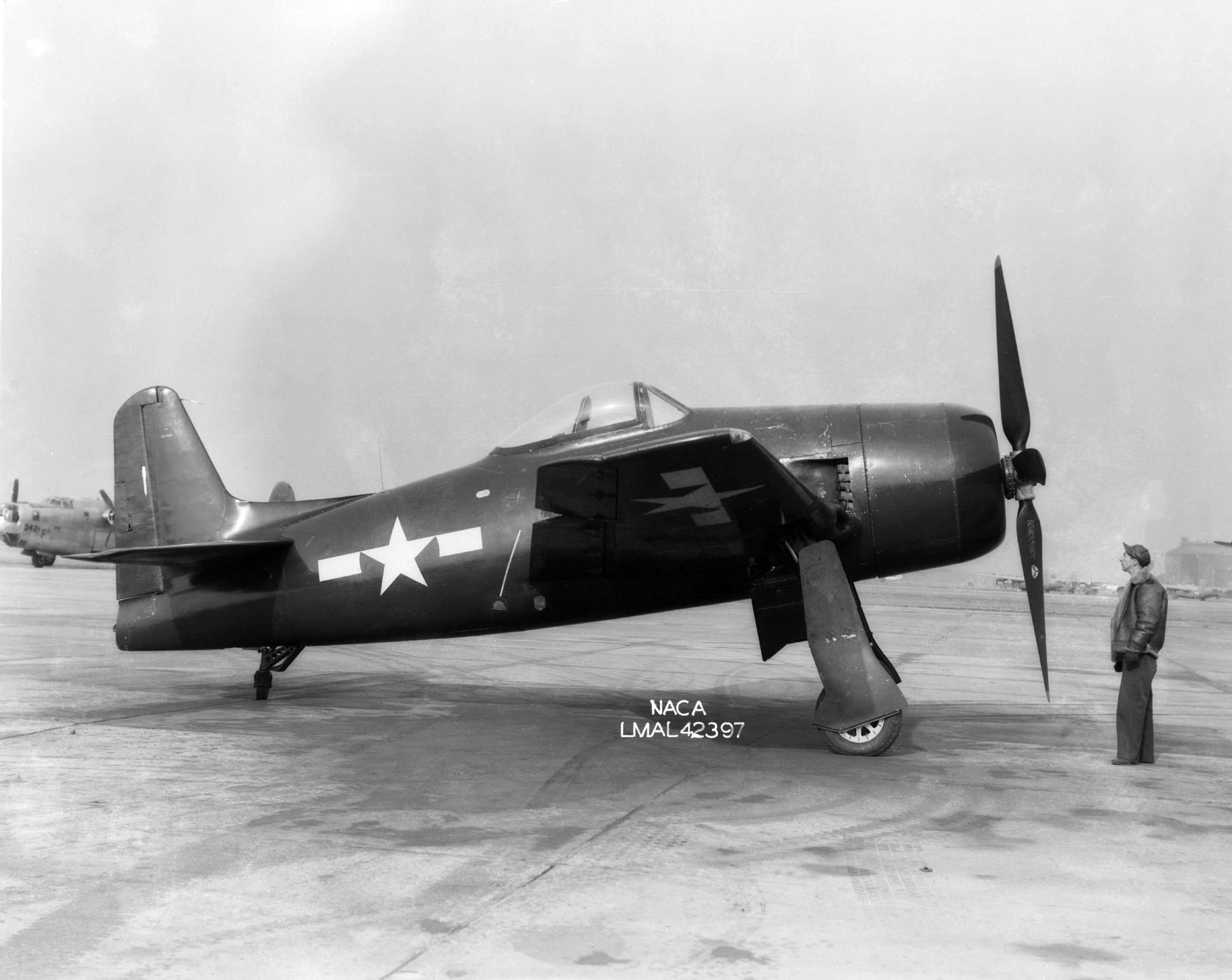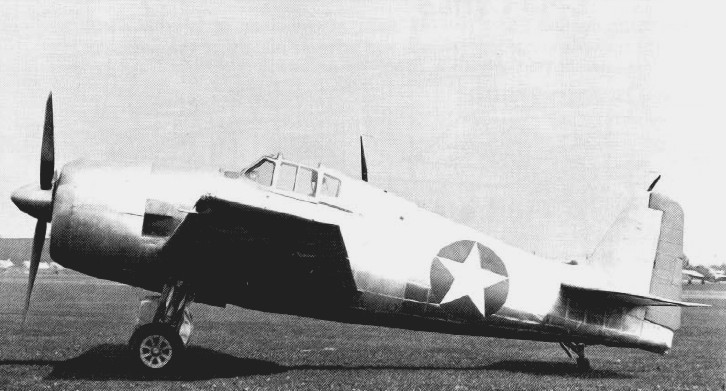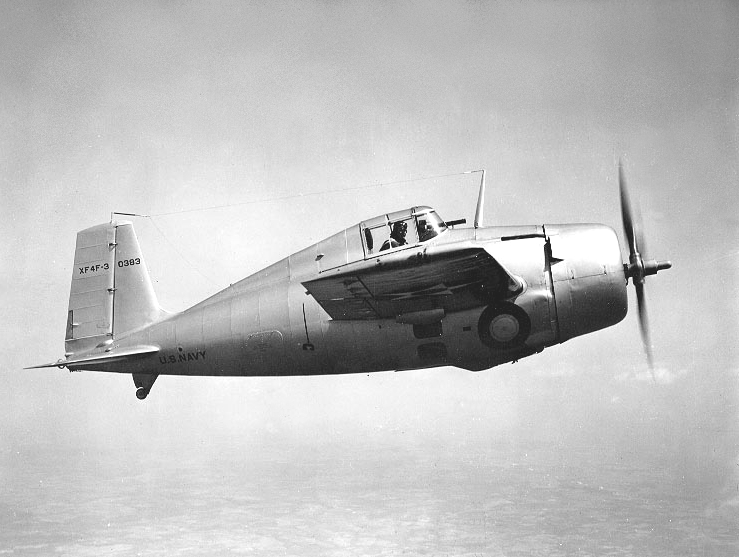|
Paul Bonhomme
Paul Bonhomme (born 22 September 1964) is a British aerobatics and commercial airliner pilot and owner/race pilot of Team Bonhomme, the Red Bull Air Race World Champion for 2015. Racing career Bonhomme was born into a family of aviators. His father was an airline pilot and his mother worked as a flight attendant. His brother is a commercial pilot. Bonhomme's flying career started in 1980 at White Waltham Airfield as a general dogsbody by cleaning hangars, polishing aircraft and refuelling aircraft. At age 18 he gained his Private Pilot Licence taking first the FAA licence at Redbird Airfield near Dallas, Texas and subsequently became a flight instructor. In 1985 he became an air taxi pilot and in 1987 joined Air Cymru, a Welsh charter airline, flying the Boeing 737. He now flies as a captain of Boeing 747s for British Airways. His aerobatics career started in 1986, flying an Ultimate Pitts. He went on to fly the Yak-50, Extra 300 and then the Sukhoi Su-26 in 1991 for Rich ... [...More Info...] [...Related Items...] OR: [Wikipedia] [Google] [Baidu] |
2009 Red Bull Air Race World Championship
The 2009 Red Bull Air Race World Championship was the seventh official Red Bull Air Race World Championship series. The 2009 champion was Paul Bonhomme, who won the series for the first time. Aircraft and pilots New pilots Four new pilots joined the Red Bull Air Race Series for the 2009 season as Steve Jones left the series. They were Matthias Dolderer from Germany, Matt Hall from Australia, Yoshihide Muroya from Japan and Pete McLeod from Canada Canada is a country in North America. Its ten provinces and three territories extend from the Atlantic Ocean to the Pacific Ocean and northward into the Arctic Ocean, covering over , making it the world's second-largest country by tot .... McLeod was the youngest pilot in the history of the series, joining at 25 years of age. Race calendar and results Championship standings (*) indicates the pilot received an extra point for the fastest time in Qualifying References External links Red Bull Air Race ... [...More Info...] [...Related Items...] OR: [Wikipedia] [Google] [Baidu] |
Pitts Special
The Pitts Special (company designations S-1 and S-2) is a series of light aerobatic biplanes designed by Curtis Pitts. It has accumulated many competition wins since its first flight in 1944. The Pitts biplanes dominated world aerobatic competition in the 1960s and 1970s and, even today, remain potent competition aircraft in the lower categories.Montgomery and Foster 1992, p. 92."Plane and Pilot" 1977, p. 84. Design and development Curtis Pitts began the design of a single-seat aerobatic biplane in 1943–1944.Taylor 1980, p. 899. The design has been refined continuously since the prototype first flew in September 1944; however, the current Pitts S-2 still remains quite close to the original in concept and in design. Several of the aircraft that Curtis Pitts built had a picture of a skunk on them and were called "Stinkers". After she bought it, aerobatic performer Betty Skelton called the second aircraft that Curtis built, "Little Stinker". The prototype S-2, wh ... [...More Info...] [...Related Items...] OR: [Wikipedia] [Google] [Baidu] |
Hawker Sea Fury II
Hawker or Hawkers may refer to: Places *Hawker, Australian Capital Territory, a suburb of Canberra *Hawker, South Australia, a town *Division of Hawker, an Electoral Division in South Australia *Hawker Island, Princess Elizabeth Land, Antarctica *Hawker Creek, Missouri, United States In business * Hawker (trade), a vendor of food or merchandise * Hawker Aircraft, a British aircraft manufacturer * Hawkers (company), a Spanish sunglasses company Other uses * Hawker (surname) * One who practices falconry, hunting with hawks * Hawker College Hawker College is a senior secondary college in the Australian Capital Territory. It caters to students completing their final two years of secondary education, and offers a wide range of curriculum choices. Established in 1976, Hawker has a non ..., a senior secondary college in the Australian Capital Territory * Hawker (dragonfly), a family of dragonflies in North America and Europe {{DEFAULTSORT:Hawker ... [...More Info...] [...Related Items...] OR: [Wikipedia] [Google] [Baidu] |
P-63 Kingcobra
The Bell P-63 Kingcobra is an American fighter aircraft that was developed by Bell Aircraft during World War II. Based on the preceding Bell P-39 Airacobra, the P-63's design incorporated suggestions from P-39 pilots and was superior to its predecessor in virtually all respects. The P-63 was not accepted for combat use by the United States Army Air Forces. However, it was used during World War II by the Soviet Air Force,Angelucci and Matricardi 1978, p. 100. which had also been the most prolific user of the P-39. Design and development XP-39E While the P-39 had been introduced as an interceptor, later in its development it was decided to reduce the cost and complexity of the engine by removing the turbocharger. High-altitude performance suffered dramatically as a result, and Bell proposed an experimental series to test out a variety of solutions. The resulting XP-39E featured two primary changes from the earlier P-39D from which it was developed. One was a redesigned wing. Th ... [...More Info...] [...Related Items...] OR: [Wikipedia] [Google] [Baidu] |
P-47 Thunderbolt
The Republic P-47 Thunderbolt is a World War II-era fighter aircraft produced by the American company Republic Aviation from 1941 through 1945. It was a successful high-altitude fighter and it also served as the foremost American fighter-bomber in the ground-attack role. Its primary armament was eight .50-caliber machine guns, and it could carry 5-inch rockets or a bomb load of . When fully loaded, the P-47 weighed up to 8 tons, making it one of the heaviest fighters of the war. The Thunderbolt was effective as a short-to medium-range escort fighter in high-altitude air-to-air combat and ground attack in both the European and Pacific theaters. The P-47 was designed around the powerful Pratt & Whitney R-2800 Double Wasp 18-cylinder radial engine, which also powered two U.S. Navy/U.S. Marine Corps fighters, the Grumman F6F Hellcat and the Vought F4U Corsair. An advanced turbosupercharger system ensured the aircraft's eventual dominance at high altitudes, while also influencing ... [...More Info...] [...Related Items...] OR: [Wikipedia] [Google] [Baidu] |
F8F Bearcat
The Grumman F8F Bearcat is an American single-engine carrier-based fighter aircraft introduced in late World War II. It served during the mid-20th century in the United States Navy, the United States Marine Corps, and the air forces of other nations. It was Grumman Aircraft's last piston engined fighter aircraft. Modified versions of the Bearcat have broken speed records for piston-engined aircraft. Today, the Bearcat is popular among warbird owners and air racers. Design and development Concept The Bearcat concept began during a meeting between Battle of Midway veteran F4F Wildcat pilots and Grumman Vice President Jake Swirbul at Pearl Harbor on 23 June 1942. At the meeting, Lieutenant Commander Jimmie Thach emphasized one of the most important requirements in a good fighter plane was "climb rate". Climb performance is strongly related to the power-to-weight ratio, and is maximized by wrapping the smallest and lightest possible airframe around the most powerful available e ... [...More Info...] [...Related Items...] OR: [Wikipedia] [Google] [Baidu] |
F6F Hellcat
The Grumman F6F Hellcat is an American Carrier-based aircraft, carrier-based fighter aircraft of World War II. Designed to replace the earlier Grumman F4F Wildcat, F4F Wildcat and to counter the Japanese Mitsubishi A6M Zero, it was the United States Navy's dominant fighter in the second half of the Pacific War. In gaining that role, it prevailed over its faster competitor, the Vought F4U Corsair, which initially had problems with visibility and carrier landings. Powered by a Pratt & Whitney R-2800 Double Wasp, the same powerplant used for both the Corsair and the United States Army Air Forces (USAAF) Republic P-47 Thunderbolt fighters, the F6F was an entirely new design, but it still resembled the Wildcat in many ways. Some military observers tagged the Hellcat as the "Wildcat's big brother".Sullivan 1979, p. 4. The F6F made its combat debut in September 1943. It subsequently established itself as a rugged, well-designed carrier fighter, which was able to outperform the A6M Zer ... [...More Info...] [...Related Items...] OR: [Wikipedia] [Google] [Baidu] |
F4F Wildcat
The Grumman F4F Wildcat is an American carrier-based fighter aircraft that entered service in 1940 with the United States Navy, and the British Royal Navy where it was initially known as the Martlet. First used by the British in the North Atlantic, the Wildcat was the only effective fighter available to the United States Navy and Marine Corps in the Pacific Theater during the early part of the Second World War. The disappointing Brewster Buffalo was withdrawn in favor of the Wildcat and replaced as aircraft became available. With a top speed of , the Wildcat was outperformed by the faster (), more maneuverable, and longer-ranged Mitsubishi A6M Zero. US Navy pilots, including John "Jimmy" Thach, a pioneer of fighter tactics to deal with the A6M Zero, were greatly dissatisfied with the Wildcat's inferior performance against the Zero in the battles of the Coral Sea and Midway. The Wildcat has a claimed air combat kill-to-loss ratio of 5.9:1 in 1942 and 6.9:1 for the entire war.Po ... [...More Info...] [...Related Items...] OR: [Wikipedia] [Google] [Baidu] |
Curtiss P-40
The Curtiss P-40 Warhawk is an American single-engined, single-seat, all-metal fighter and ground-attack aircraft that first flew in 1938. The P-40 design was a modification of the previous Curtiss P-36 Hawk which reduced development time and enabled a rapid entry into production and operational service. The Warhawk was used by most Allied powers during World War II, and remained in frontline service until the end of the war. It was the third most-produced American fighter of World War II, after the P-51 and P-47; by November 1944, when production of the P-40 ceased, 13,738 had been built,Murphy and McNiece 2009, p. 83. all at Curtiss-Wright Corporation's main production facilities in Buffalo, New York. P-40 Warhawk was the name the United States Army Air Corps gave the plane, and after June 1941, the USAAF adopted the name for all models, making it the official name in the U.S. for all P-40s. The British Commonwealth and Soviet air forces used the name Tomahawk for models equ ... [...More Info...] [...Related Items...] OR: [Wikipedia] [Google] [Baidu] |
Hawker Hurricane
The Hawker Hurricane is a British single-seat fighter aircraft of the 1930s–40s which was designed and predominantly built by Hawker Aircraft Ltd. for service with the Royal Air Force (RAF). It was overshadowed in the public consciousness by the Supermarine Spitfire during the Battle of Britain in 1940, but the Hurricane inflicted 60 percent of the losses sustained by the Luftwaffe in the campaign, and fought in all the major theatres of the Second World War. The Hurricane originated from discussions between RAF officials and aircraft designer Sir Sydney Camm about a proposed monoplane derivative of the Hawker Fury biplane in the early 1930s. Despite an institutional preference for biplanes and lack of interest by the Air Ministry, Hawker refined their monoplane proposal, incorporating several innovations which became critical to wartime fighter aircraft, including retractable landing gear and the more powerful Rolls-Royce Merlin engine. The Air Ministry ordered Hawker's ''Int ... [...More Info...] [...Related Items...] OR: [Wikipedia] [Google] [Baidu] |
Supermarine Spitfire
The Supermarine Spitfire is a British single-seat fighter aircraft used by the Royal Air Force and other Allied countries before, during, and after World War II. Many variants of the Spitfire were built, from the Mk 1 to the Rolls-Royce Griffon engined Mk 24 using several wing configurations and guns. It was the only British fighter produced continuously throughout the war. The Spitfire remains popular among enthusiasts; around 70 remain airworthy, and many more are static exhibits in aviation museums throughout the world. The Spitfire was designed as a short-range, high-performance interceptor aircraft by R. J. Mitchell, chief designer at Supermarine Aviation Works, which operated as a subsidiary of Vickers-Armstrong from 1928. Mitchell developed the Spitfire's distinctive elliptical wing with innovative sunken rivets (designed by Beverley Shenstone) to have the thinnest possible cross-section, achieving a potential top speed greater than that of several contemporary figh ... [...More Info...] [...Related Items...] OR: [Wikipedia] [Google] [Baidu] |
Duxford Aerodrome
Duxford Aerodrome is located south of Cambridge, within the civil parish of Duxford, Cambridgeshire, England and nearly west of the village. The airfield is owned by the Imperial War Museum (IWM) and is the site of the Imperial War Museum Duxford and the American Air Museum. Duxford Aerodrome has a Civil Aviation Authority (CAA) Ordinary Licence (Number P678) that allows flights for the public transport of passengers or for flying instruction as authorised by the licensee (Cambridgeshire County Council). The aerodrome is not licensed for night use. History Early Use The area around Duxford was first used for military purposes as part of the Army Manoeuvres of 1912. It was not until October 1917 that construction was started on a more formal airfield. The new aerodrome was built as part of a pair with a sister station at Fowlmere. The hangars built in the period correspond to a Directorate of Fortifications and Works drawing number 332/17. The drawing was signed by L ... [...More Info...] [...Related Items...] OR: [Wikipedia] [Google] [Baidu] |









